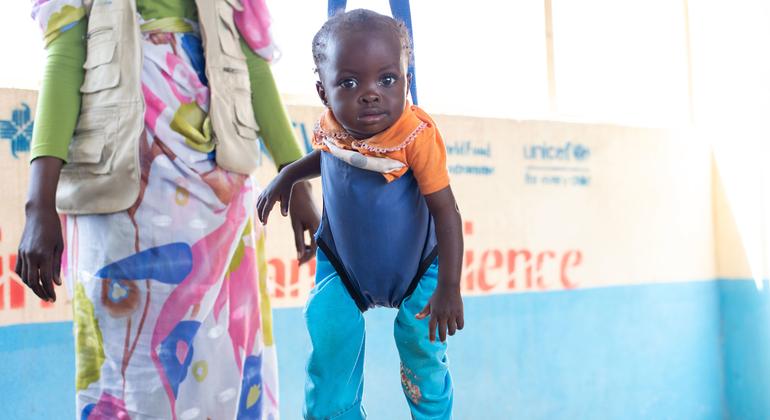Although food security has begun to improve in areas where fighting has subsided, famine has taken hold in conflict-hit locations that have been cut off from aid or under siege, according to the latest UN-backed IPC food security analysis.
Famine conditions have been confirmed in Darfur’s El Fasher and Kadugli, where “people have endured months without reliable access to food or medical care,” the Food and Agriculture Organization (FAO), the World Food Programme (WFP) and child rights agency UNICEF said in a joint release.
Ceasefire call
UN chief António Guterres called for an immediate ceasefire in Sudan on Tuesday as disturbing images of apparent mass killings in El Fasher and elsewhere continue to circulate online.
In a tweet, Mr. Guterres appealed to the Sudanese Armed Forces and the rebel paramilitary Rapid Support Forces “to come to the negotiating table to bring an end to this nightmare of violence”.
Heavy fighting erupted in Sudan in April 2023 between the rival armies which has created a massive humanitarian disaster.
Last week saw the fall of government held El Fasher after more than 500 days of siege by rebels.
Hundreds of civilians – including humanitarian workers – are believed to have been killed, and many others are trapped behind barricades.
Millions still going hungry
The IPC analysis confirmed that by September, roughly 21.2 million people in Sudan – 45 per cent of the population – are facing high levels of acute food insecurity, representing a slight improvement.
Furthermore, an estimated 3.4 million people are no longer facing crisis levels of hunger.
The improvements follow a gradual stabilisation since May in three states – Khartoum, Al Jazirah and Sennar – where conflict has eased and families are returning, among other developments.
“But these gains are limited,” the UN agencies said. “The wider crisis has shattered the economy and vital services, and much of the infrastructure people rely on has been damaged or destroyed.”
‘Fragile improvements’
Favourable crop growing conditions are also expected after the harvest and into next year, with crisis levels of hunger improving to 19.3 million through January.
They warned, however, that “these fragile improvements are highly localised” as many returning families in Khartoum and Al Jazirah have lost everything and will struggle to benefit from the harvest.
At the same time, active conflict persists in western regions, notably North and South Darfur as well as West and South Kordofan.
Meanwhile, hunger is expected to worsen starting in February as food stocks run out and fighting continues.
Famine in besieged areas
The IPC’s Famine Review Committee (FRC) found that famine conditions are occurring in El Fasher, capital of North Darfur state, and Kadugli in South Kordofan, which have been largely cut off due to conflict.
The UN agencies noted that conditions in Dilling, South Kordofan, “are likely similar to Kadugli, but cannot be classified due to insufficient reliable data – a result of restricted humanitarian access and ongoing hostilities.”
In the Western Nuba Mountains, conditions have shown marginal improvement, but famine remains high unless humanitarian access improves.
The FRC projects a risk of famine in 20 additional areas across Greater Darfur and Greater Kordofan, including rural localities, displacement camps and several new locations in East Darfur and South Kordofan.
Additionally, Global Acute Malnutrition (GAM) rates are alarmingly high, ranging from 38 to 75 per cent in El Fasher and reaching nearly 30 per cent in Kadugli.
This is happening as outbreaks of cholera, malaria and measles continue to rise in areas where health, water and sanitation systems have collapsed.




